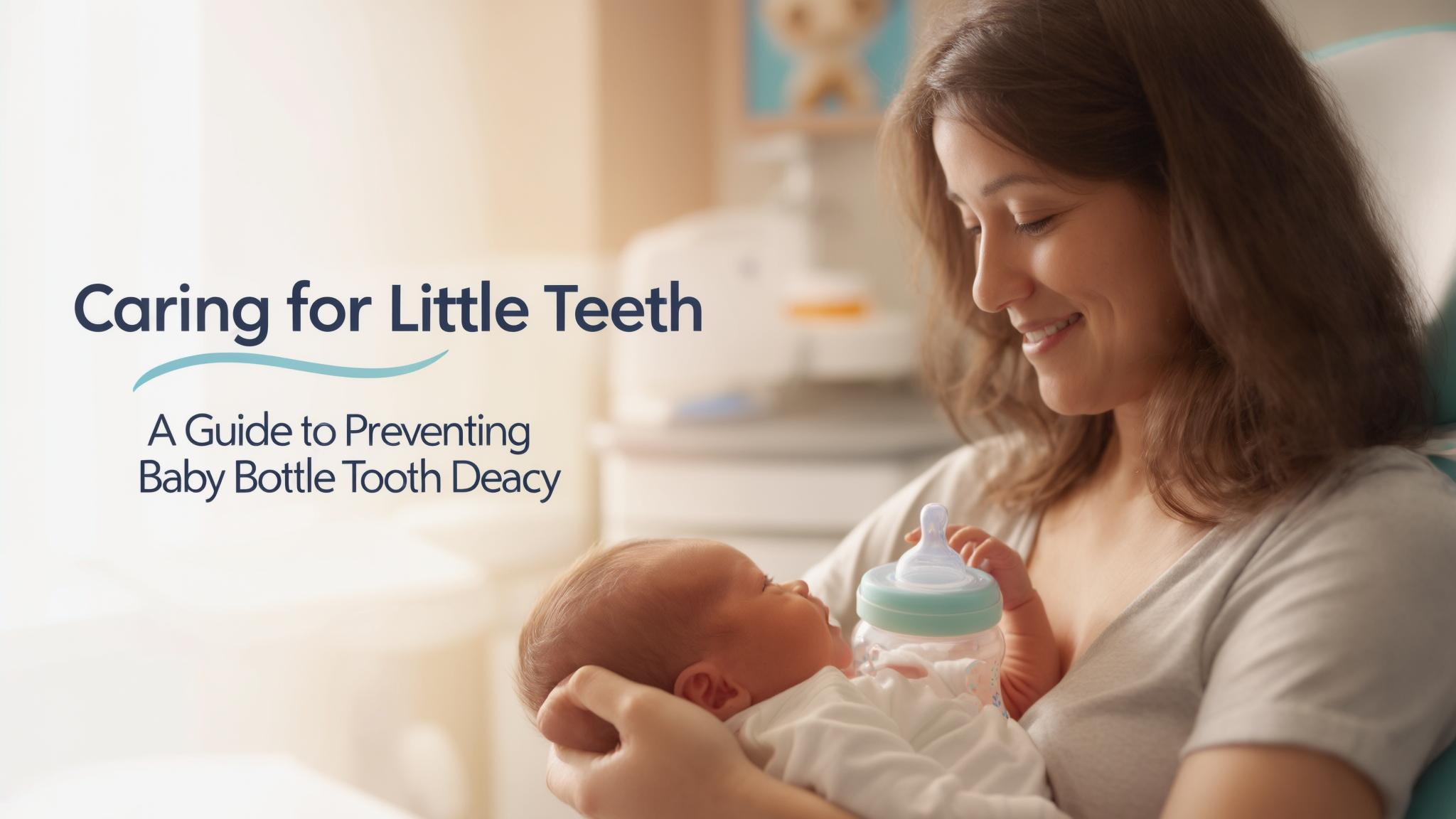Understanding Baby Bottle Tooth Decay
Baby bottle tooth decay is a condition that affects the teeth of infants and toddlers. It occurs when a child's teeth are frequently exposed to sugary liquids, leading to tooth decay. This condition often starts with the front teeth, but it can affect other teeth as well. Common symptoms include white spots on the teeth, tooth sensitivity, and in severe cases, cavities.
Age Group Most Affected
Infants and toddlers are the most vulnerable to baby bottle tooth decay. According to the American Dental Association, a significant number of children under the age of 5 are affected by this condition. These early years are crucial for dental health, as baby teeth play a vital role in a child's development.
Causes of Baby Bottle Tooth Decay
Role of Sugary Liquids
Sugary liquids such as milk, formula, and fruit juice are common culprits in tooth decay. When these sugars remain on a child's teeth, they interact with bacteria in the mouth to form acids. These acids can erode the enamel, leading to decay.
Prolonged Bottle Use
Allowing children to sleep with bottles can exacerbate tooth decay. The prolonged exposure to sugary liquids without any cleaning can be harmful. Similarly, sippy cups, often used as a transition from bottles, can also contribute to decay if used improperly.
Poor Oral Hygiene Practices
Lack of regular brushing and flossing can significantly increase the risk of decay. It's essential to establish good oral hygiene habits early. Early dental care, including regular check-ups, is crucial to prevent decay.
Consequences of Untreated Baby Bottle Tooth Decay
Physical Health Implications
Untreated decay can lead to pain and discomfort, making it difficult for children to eat and speak properly. This discomfort can affect their overall health and nutrition.
Emotional and Psychological Effects
Children with visible decay may experience a drop in self-esteem and confidence. Social interactions may become challenging if they feel self-conscious about their teeth.
Long-term Dental Issues
If left untreated, baby bottle tooth decay can lead to more severe dental problems, requiring extensive treatment. This may include fillings, crowns, or even extractions.
Prevention Strategies
Proper Feeding Practices
It's important to follow guidelines for bottle and sippy cup use. Transitioning children from bottles to cups by their first birthday can help reduce the risk of decay.
Oral Hygiene Practices
Brushing teeth from an early age with fluoride toothpaste is vital. Regular dental check-ups should start by the child's first birthday to ensure healthy teeth.
Educating Caregivers
Parents and caregivers play a crucial role in preventing decay. Providing them with resources and training on dental health can make a significant difference.
When to Seek Professional Help
Signs That a Child May Need to See a Dentist
If you notice white spots or discoloration on your child's teeth, it's time to see a dentist. Regular dental visits are essential to catch any early signs of decay.
What to Expect During a Child’s Dental Appointment
During a dental visit, the dentist will examine your child's teeth and provide guidance on proper care. They may also apply fluoride treatments to strengthen the teeth.
Conclusion
Preventing baby bottle tooth decay is crucial for your child's overall health. By establishing good dental habits early, you can ensure a bright and healthy smile for your child. Remember, proactive care and regular dental visits are key to maintaining your child's dental health.
References
- American Dental Association. "Baby Bottle Tooth Decay." ADA Website
- Centers for Disease Control and Prevention. "Children's Oral Health." CDC Website
- Suggested reading: "The Healthy Smile: A Parent's Guide to Children's Dental Care" by Dr. Jane Doe.

